Askernish Golf Club - the origin of species!

We do this job because we love it! Having said that, opportunities to visit Askernish Golf Course on the Isle of South Uist are few and far between. Much has already been said about this wonderful golf course and one quickly runs out of superlatives when trying to describe it, although two previous articles in Pitchcare do come close - search for 'As Nature Intended' and 'Looking for the Legend'.
As we walk through different habitats, we observe that particular types of plants grow communally and are associated with certain environments. As way back as 1923, Sir Arthur George Tansley recognised that organisms exist within communities. This is related to a number of factors: geology, soil type, hydrology and management are all significant. And, although there aren't any habitats in Britain that could properly be described as 'natural', because of human influence, some areas could be described as semi-natural.
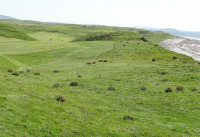
After discussing the rough at Askernish Golf Course with Gordon Irvine, the golf course consultant that 'discovered' this course initially created by Old Tom Morris, and Allan MacDonald the Head Greenkeeper, it was decided that it would be worth discovering what plants occur there in order to help inform the management process.
The field survey followed the methodology used in the production of the NVC. Within the rough, a 2m x 2m quadrat was used and quadrats were selected within uniform and homogenous stands of vegetation. All vascular plants were recorded to species or subspecies where possible. Apomictic groups were recorded as an aggregate, i.e. Rubus fruticosus. agg. Nomenclature follows the methodology of Clive Stace when researching New Flora of the British Isles.
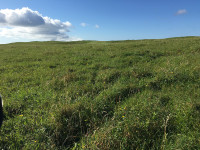
These values were assigned to each species, to bare soil and to litter. The total coverage always exceeded one hundred percent ground coverage because of the overlapping nature of the plants.
A Modular Analysis of Vegetation Information System (MAVIS) plot analyser was used to match particular groups with particular NVC communities. These were then assessed against the descriptions in John Rodwell's British Plant Communities.
MAVIS brings all the varied classification systems together in one place. Ecologists, vegetation scientists and nature reserve managers all have their own systems, and MAVIS produces a description of the entered species data in terms of each classification. This means MAVIS can express many different sorts of plant community in the same standard language, allowing for comparisons across sites and scales.
This survey of the areas immediately off the fairway, i.e. the rough, undertaken on the 25th of August, provided the information shown in the table left.
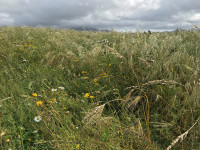
Agricultural use of the machair habitat dates back to a time when easily accessible lands with easily worked soils were appreciated much more then than they are today. Small-scale cropping of oats, barley and rye, and later potatoes; seasonal grazing and haymaking; and fertilising with seaweed and the contents of the cattle byre have resulted in the machair vegetation we see today. There is approximately 40,000 hectares (154 square miles) of this type of habitat. There is no machair anywhere else in the world.
This interest could be seen as academic. However, it has significant input into the management process. I wrote an article some time ago regarding the use of monitoring as a management tool.
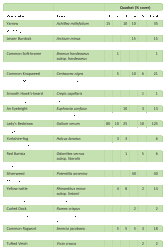
Understanding the ecology of the plants we are working with, and how to operate in a sympathetic manner, helps reduce the need for costly interventions such as the use of herbicides and growth regulators, or cultural operations such as scarifying or mowing and removal.
The course is grazed overwinter but, by monitoring the vegetation, we can determine if the stocking rates are appropriate or if they need amending.
As one of the jewels in Scotland's golfing crown, Askernish is undoubtedly a very special place for nature. My thanks go to Paul for the invitation, to Allan for his good hospitality, to Gordon for his wisdom and to Pitchcare for allowing me to visit such a wonderful course.
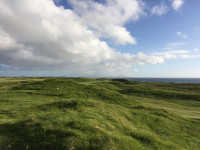
UK Biodiversity Action Plan: http://www.snh.gov.uk/docs/A1509886.pd
Askernish - as nature intended: https://www.pitchcare.com/magazine/as-nature-intended.html
Looking for the Legend: https://www.pitchcare.com/magazine/looking-for-the-legend.html
Monitoring as a management tool: https://www.pitchcare.com/magazine/monitoring-a-useful-tool-poorly-employed.html
State of Nature 2016: http://www.rspb.org.uk/forprofessionals/science/research/details.aspx?id=363867
About the author: John Handley is Technical Manager at Maxwell Amenity.
